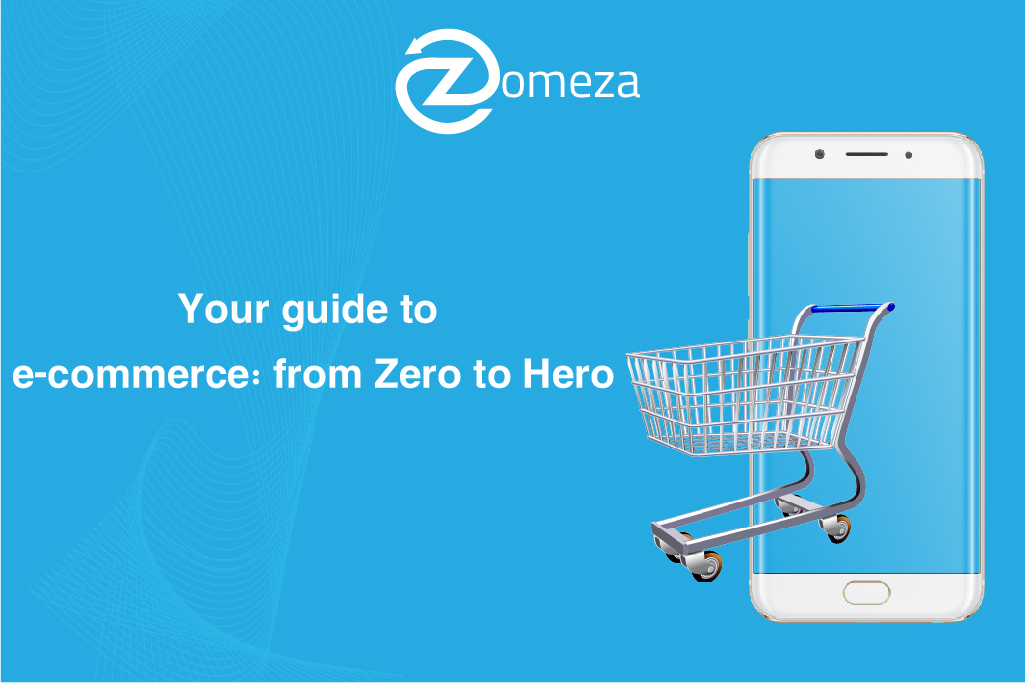E-commerce has transcended its traditional borders and become one of the most important economic activities in the modern era. E-commerce has witnessed extraordinary development during the COVID-19 pandemic, and it is still developing if you want to move into the world of e-commerce and achieve sustainable success in it. “Your Guide to E-Commerce: From Beginning to Professionalism” is the article that helps you reach this goal.
5 steps to start your e-commerce successfully.
The first step: choosing the appropriate product.
Before starting your own e-commerce business, there are many aspects you need to take into consideration, but the most important and difficult question is what you will sell. The e-commerce market is very competitive, so you need to look at areas where you have a competitive advantage. This may mean: Sell the product you designed yourself, giving you a unique advantage. Selling to a specific community in niche markets, where there is less competition. Catch new trends early, before others do. Ensuring you have a viable and growing product from the start helps lay a strong foundation for your e-commerce.
Step Two: Define your goals and develop your appropriate strategy.
Creating a clear business plan is crucial to creating a successful business, whether online or offline. This plan will guide you on your journey to success, and help you overcome the challenges you may face. The business plan includes basic elements, such as:
- Market Analysis: To understand your target audience and their needs.
- Marketing Plan: To define how will you communicate your brand, products, or services to potential customers.
- Financial Plan: To determine your financial needs and how to finance your project.
- Operations Plan: To describe how your company operates on a day-to-day level.
- Creating a clear business plan is the first and most important investment you can make in your business.
Step Three: Create your e-commerce website.
If you have the technical background of building your site from scratch, this is always an option, but chances are you'll want to leverage previously available resources to create an online store. With sites like Shopify. You can purchase your domain name and use the tools available on these sites to build a custom website from the ground up. Or resort to specialized companies such as Zomeza to build and develop your online store and marketing services for your products.
Step Four: Create your e-commerce website.
In addition to deciding what you will sell, you will need to think about building your inventory. If you do not manufacture the products yourself, you will need to find a supplier or find a way to distribute through resale. Shipping is critical to your business. If you choose an inexperienced shipping partner, customers may have a bad experience that may lead to negative reviews. Therefore, you must take the time to understand what different logistics companies have to offer. If you need more clarification, seek professional advice.
Step Five: Marketing and managing your online store.
Once you've established your business, made an inventory of your inventory, and addressed all (or most) of the issues with your website, it's time to start thinking about officially opening a website. How you launch your website will depend largely on the resources you have available. If your business is small, be sure to take advantage of social media to advertise your location. After launching your website, your marketing plan doesn't have to end. Make sure to use Google Analytics to better understand your audience and their habits. For your site to be effective, you must constantly work to grow your customer base. In conclusion of this article, we can say that e-commerce is an amazing world full of opportunities and challenges. If you are considering starting an online business or developing your current business, “Your Guide to E-Commerce: From Beginning to Professionalism” provides you with the tools and knowledge necessary to succeed in this field.



